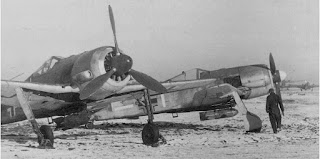I've encountered once again an all-too well-known theme; the idea that navies might in some way or another be relevant to the Baltic defence.
I say forget the navies in this context! Even assuming NATO would dare to move substantial surface task forces far east in the Baltic Sea, they would not have much effect. They could just as well launch a couple cruise missiles from afar.
You cannot reliably use any Baltic harbour in a Baltic defence scenario; the Baltic Sea is a freshwater sea at the surface, high salinity is only present at more than 40 m depth.
This Swedish graphic shows the maximum ice coverage:
 |
| (c) Swedish Maritime Administration |
The regions covered in ice in the left graphic would have the greatest ice thickness in the right graphic.
Real photos are sometimes more convincing than abstract maps, so ESA satellite photo this shows how even when the ice cover is modest, the Baltic region will largely be behind ice (there's a single usually all-year ice-free harbour in Lithuania):
 |
| click for larger image (c) ESA |
A convenient political map of the Baltic Sea region is here.
Frozen seas can be traversed with support of an icebreaker, and cleared
lanes can be used by ships with approx. 1,000 hp power per metric ton
weight (which warships usually have) according to a rule of thumb. Yet
the precious few icebreakers should not be relied on. To sabotage or attack them at the
beginning of an invasion would be rather easy, and some actually are
Russian icebreakers.
The complicated hydrography (with the huge difference in salinity depending on depth and location) of the Baltic Sea poses quite a challenge for MCM and ASW specialists; the Germans and Danes are experienced in this area, British, French, Spanish, Italian and American personnel not so much.
Now about problems caused by ice cover in addition to navigation:
ASW ships could also suffer from damage to bow sonars due to ice collisions and MCM ships often have a wooden hull surface that would not be suitable for passing even through cleared lanes, much less thin ice. Aircraft carriers could not freely turn into the wind to facilitate aircraft launches with full fuel and much payload. Accidents happen with inexperienced bridge crews who never before cooperated with icebreakers. Submarine operations are impeded under the ice; sub-launched missiles would not be available, periscope IFF would not be available, snorkeling would not be available and radio communications would be limited as well. On the other hand, sonobuoys could not be dropped, and helicopters' dipping sonars would be useless as well, so aerial ASW over ice is quite a dud in general.
Some nuclear attack submarines would be prepared to break through the ice once in a while, but the generally rather shallow waters don't suit the large SSNs well and their crews rarely if ever trained in this area.
_____________
I understand that naval-minded people like to think about uses for navies, but Baltic defence hardly is one. A deterrence against invasion needs to be effective all-year, and in worst case the defence (counterattack) needs to be successful all-year as well.
Likewise, I suppose air power-minded people will think about air attack as relevant, but again I doubt it. A Baltic defence conflict scenario would need to escalate to include Belarus (which the Russians better keep neutral and use as radar base and secure supply route) and the Ukraine (imaginable that sometime in the rather distant future they might want to re-take territory from Russia) in order to enlarge the area enough to make air attack potentially decisive.
A Baltics-only defence scenario could see a concentration of air defences that would take weeks to dismantle, if that succeeds at all. Russia could move several high-end air defence regiments from the Moscow area to Latvia by road within a week or so.
That's why I recently looked at the brigades (equivalents) count: I think the land forces and political decisions are all-important for Baltic deterrence and defence, with air and sea power being distant subordinates.
S O
.






